First Impressions: Asus ProArt Studiobook 16 3D OLED
We go hands on with the 3D laptop
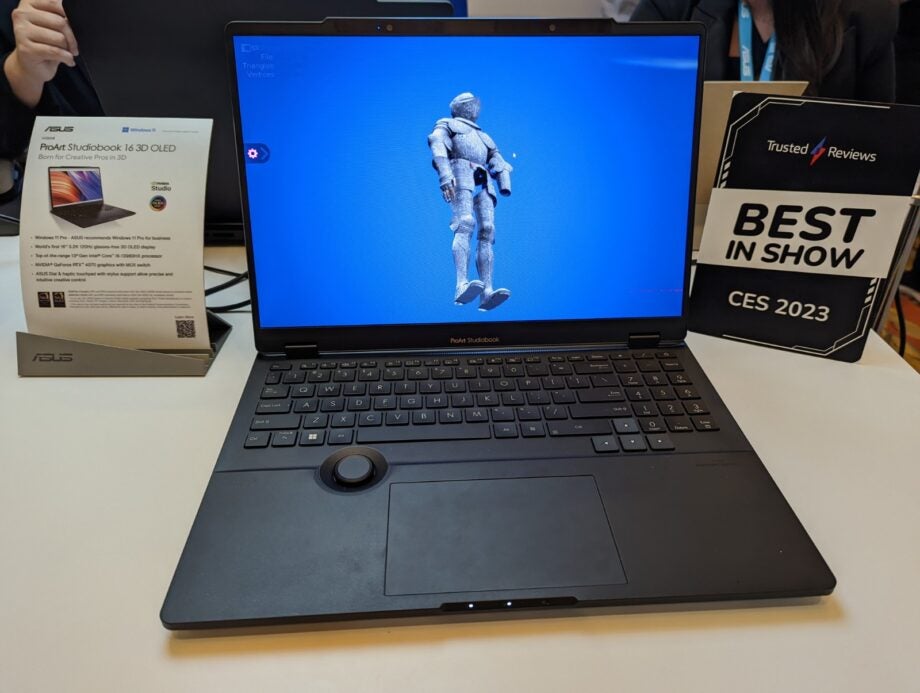
First Impressions
The Asus ProArt Studiobook 16 3D OLED has a wonderful 3D screen, which could be extremely useful for game developers and other creative professionals. However, this is definitely a laptop with niche appeal given the high cost that comes with 3D tech.
Key Features
- 3D screen:Can display 3D images without the need of glasses.
- OLED screen technology:Benefits from high contrast and colour accuracy with OLED technology.
- Latest Nvidia and Intel spec:Powered by an Intel Core i9-13980HX processor and Nvidia RTX 4070 GPU, offering a high-end performance.
Introduction
Following the demise of 3D TVs, it’s fair to say most people have become sceptical about the future success of such technology. And yet, that hasn’t dissuaded Asus from launching a new laptop with a 3D display.
The Asus ProArt Studiobook 16 3D OLED is an absolute marvel, capable of displaying 3D images without the need of glasses. On-screen objects look as if they’re popping out of the display and entering the real world.
Asus isn’t the first company to launch a laptop with a 3D panel, with rival company Acer beating it to the punch with both the ConceptD 7 SpatialLabs and Predator Helios 300 SpatialLabs Editions.
But Asus says the ProArt Studiobook 16 3D OLED is the very first glasses-free OLED laptop to make use of the technology. I was able to go hands on with the laptop at CES 2023. Here are my first impressions.
Design and display
- 3D screen offers improved depth to on-screen objects
- OLED panels provides excellent vibrancy and colour accuracy
- Asus Dial allows for finer control with creative apps
The Asus ProArt Studiobook 16 3D OLED looks like a standard laptop, besides the large camera sensors sticking out of the top.
Turn on a 3D-compatible video, and this laptop will spring into life. During my hands-on time, I was able to play around with a model of a knight. Rotating him back caused his legs to appear as if they had broken through the glass screen and were sticking out into the real world.
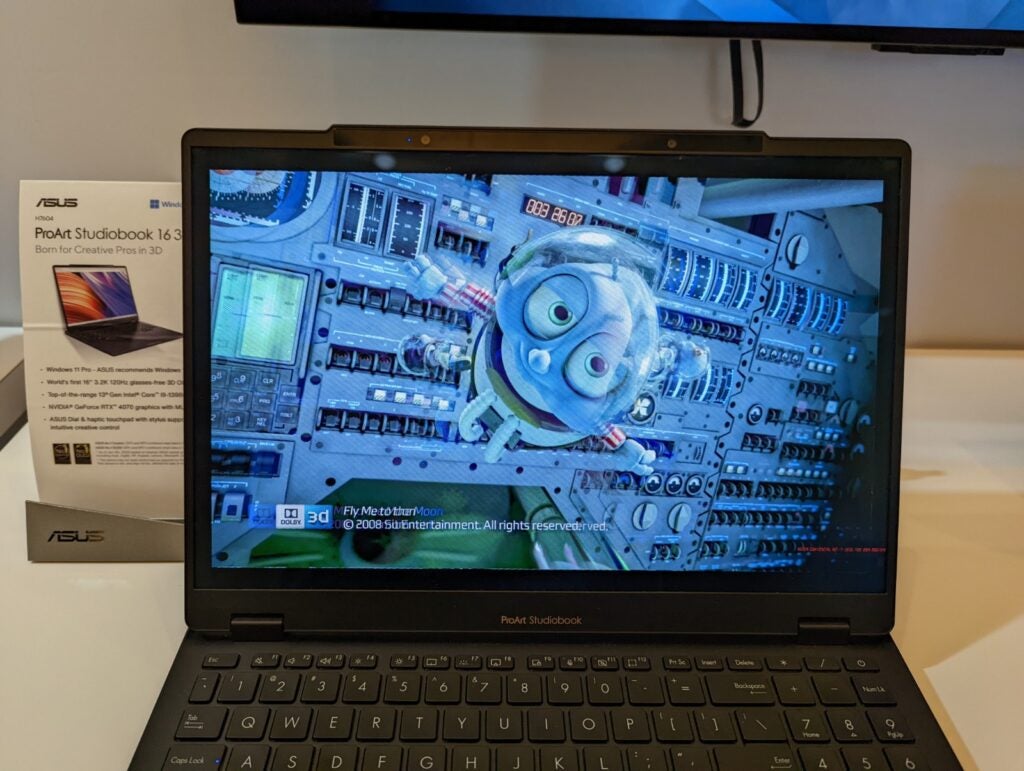
It’s unfortunately next to impossible to show this visual effect via still images, but you’ll have to take my word that it’s incredibly impressive. It made it easier to study objects from multiple angles and see what they look like in a 3D space. This will be particularly useful for VR game developers, with traditional 2D laptop screens doing a poor job of showing how a model will look in the virtual world.
A second demo showed off cartoon aliens in space. The 3D technology helped to create the illusion that a character was floating right out of the screen; it looked so realistic that I couldn’t fight off the urge to try to grab the animated character.
I’m personally not convinced anyone is going to buy this laptop specifically to watch 3D movies such as Avatar: The Way of Water, but it’s impressive to see this laptop’s ability to display immersive 3D video that looks just as good as it does at the cinema.
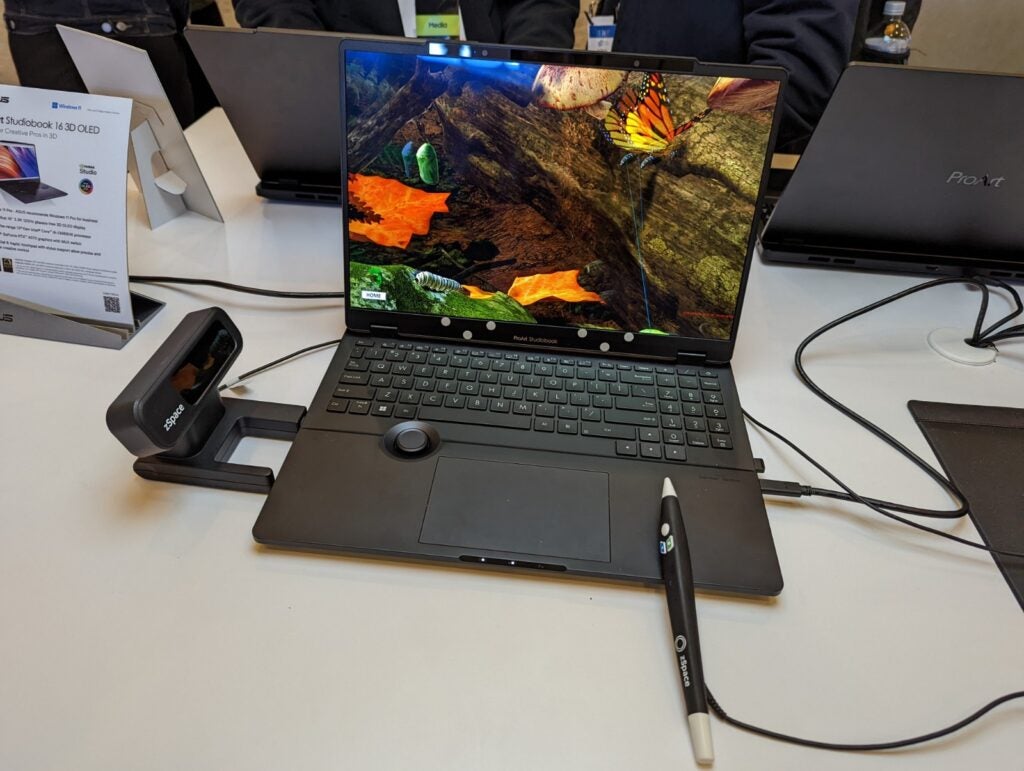
Asus also showed me a demo of its Asus ProArt Studiobook 16 3D OLED laptop working alongside a zSpace camera. This technology allowed me to use a paired stylus to pull on-screen objects towards me, as if I was plucking them right out of the screen. I was able to hold an animated butterfly at the end of the stylus, and then rotate it around so I could study its wings in closer detail.
The zSpace camera won’t be available to purchase with Asus ProArt Studiobook 16 3D OLED, at least not at the time of writing, but this CES 2023 demo demonstrated the exciting potential of this 3D-capable laptop.
Being part of the ProArt Studiobook series, this laptop also has all of the features required for high-end content creation. The Asus Dial sticks out, offering finer control than what any trackpad can with a variety of content creation apps.
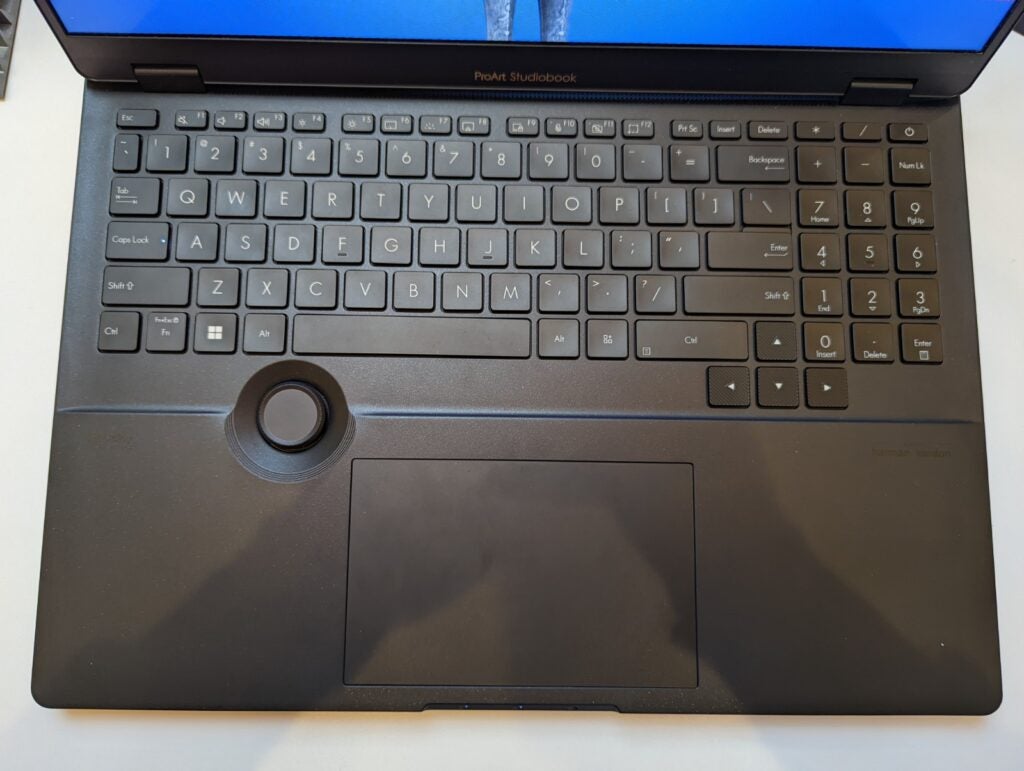
The 16-inch screen also uses OLED technology, with Asus claiming it be the very first OLED to use glasses-free 3D. OLED offers a big advantage over more generic laptop screens, with superior contrast and colour accuracy – both of which are very important to creative professionals.
The display also flaunts a speedy 120Hz refresh rate, which makes the laptop better equipped to display fast moving objects with more clarity.
This is a fairly large and heavy laptop, so should be considered as a desktop replacement rather than an ultra-portable device. It has a Mineral Black finish which looks pretty nice, although I think the laptop could do with a splash of colour to make it stand out a little more. Even the lid looks bland, with little personality to help it stand out from the crowd and show the world it has 3D capabilities.
Specs
- 24-core Intel processor ideal for creative workloads
- Packs a powerful Nvidia RTX 4070 GPU
- Up to 64GB of RAM and 8TB storage
The Asus ProArt Studiobook 16 3D OLED is powered by an Intel Core i9-13980HX processor, which packs 24 cores / 32 threads and is capable of speeds up to 5.6GHz – you’ll struggle to find a more powerful processing performance.
Asus has also slapped an Nvidia RTX 4070 inside, which is part of Nvidia’s latest range of laptop GPUs. It’s not quite the fastest chip Nvidia offers (the RTX 4090 takes that honour) but it still has plenty of power for the vast majority of creativity tasks.
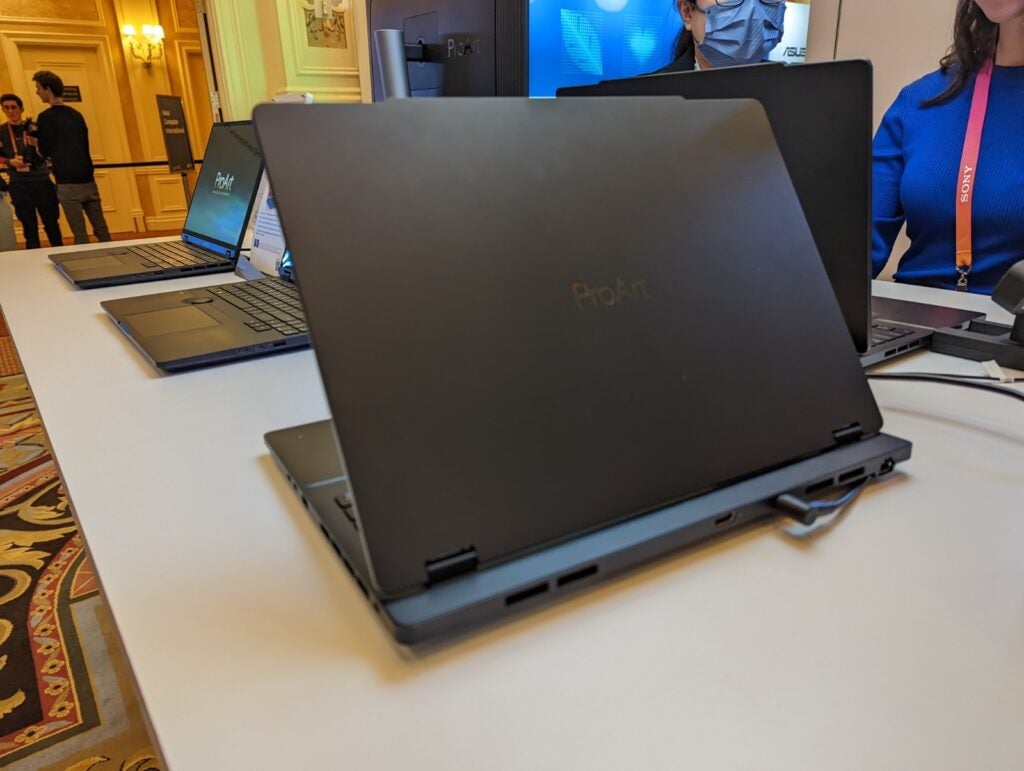
Asus claims its new IceCool Pro thermal technology should help to keep the laptop cool and quiet during heavy workloads, although I’ll have to wait until I get a review sample to test this out.
The laptop can be configured with up to 64GB of DDR5 memory, as well as 8TB of storage. It’s unlikely that you’ll require more memory or storage space than what’s provided here.
First Impressions
The 3D technology is very impressive on the Asus ProArt Studiobook 16 3D OLED, especially since you don’t need to wear a pair of glasses. But I think it will have niche appeal, with the average person having little need for a 3D view.
This feels very much like a prosumer laptop for 3D artists, especially those designing assets for virtual reality. Being able to see a model from different angles in a 3D space should be extremely useful, although only to a specific audience.
Save money with Trusted Reviews vouchers
Fancy getting a major discount on some of the biggest Asus products currently available? Then you’ll be pleased to know that our team has secured numerous vouchers and promo codes from Asus, all in the name of saving you money.


